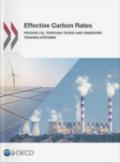This paper seeks to better understand how one plausible development in a green energy economy transition of the transport sector can be governed: a breakthrough of battery-electric vehicles (BEV). Drawing on recent results and lessons from BEV studies at local, national and regional scales, the paper presents two alternative scenarios of BEV uptake until 2030 – one incremental growth scenario and one breakthrough scenario. It then draws on the multilevel perspective (MLP) on socio-technical systems as an approach to identify the governance implications of the breakthrough scenario. Based on a characterisation of barriers and drivers at landscape, regime and niche levels, it identifies governance interventions to enable a BEV breakthrough. The results point towards a multidimensional governance approach that includes conventional policy instruments such as durable incentive policies, with a predictable mechanism for adjustment and phase-out, and mechanisms for mobilising investment finance for fast and super-fast charging and home charging along public roads.
This paper provides a regional, empirical analysis of policy portfolios that aim to contribute towards a ‘Green Energy Economy’ (GEE) transformation. Taking green economy policies and related indicators as the analytical framework, the study examines (i) the composition of policy portfolios promoting low-carbon energy technologies, (ii) short-term trends related to the GEE, (iii) long-term empirical observations of GEE-related factors, and (iv) whether, given these results, CO2 emission reduction targets can be met. The study focuses on the following regions: Africa, Asia, Latin America and the Caribbean, the Middle East, Non-OECD Europe and countries from the Former Soviet Union, Oceania, OECD Europe, and OECD North America. Findings reveal that low-carbon energy technology policies have spread rapidly since the 2000s. Economics incentives are widespread across all regions, highlighting the growing use of market-based policies. The short-term analysis shows that per capita income growth (and to a lesser extent population growth) are the main obstacles to transition towards a GEE transformation.
This paper defines the ‘2°C capital stock’ as the global stock of infrastructure which, if operated to the end of its normal economic life, implies global mean temperature increases of 2°C or more (with 50% probability). Using IPCC carbon budgets and the IPCC’s AR5 scenario database, and assuming future emissions from other sectors are compatible with a 2°C pathway, the researchers calculate that the 2°C capital stock for electricity will be reached by 2017 based on current trends. In other words, even under the very optimistic assumption that other sectors reduce emissions in line with a 2°C target, no new emitting electricity infrastructure can be built after 2017 for this target to be met, unless other electricity infrastructure is retired early or retrofitted with carbon capture technologies. Policymakers and investors should question the economics of new long-lived energy infrastructure involving positive net emissions.

In the view of pressing unemployment and environmental problems, different policies have been proposed to create jobs in the transition to a green economy, including the so-called “green jobs”. There has been an intense debate on the quantification of these employment effects, especially in the European Union. Most studies have focused on estimating gross future employment effects and have ignored the effects between different sectors and countries. This paper looks, for the first time, at the past net employment impacts from the transformation of the EU energy sector including spill-over effects, by using a multi-regional input–output model and the World Input–Output Database. The analysis is focused on the period (1995–2009) when the EU’s energy structure went through a significant shift, away from the more carbon intensive sources, towards gas and renewables. The researchers estimate the net employment generated from this structural change at 530,000 jobs in the EU (0.24% of total employment in 2009), of which one third is due to trans-boundary effects within the EU (i.e. employment generated in one country due to the changes in another).
